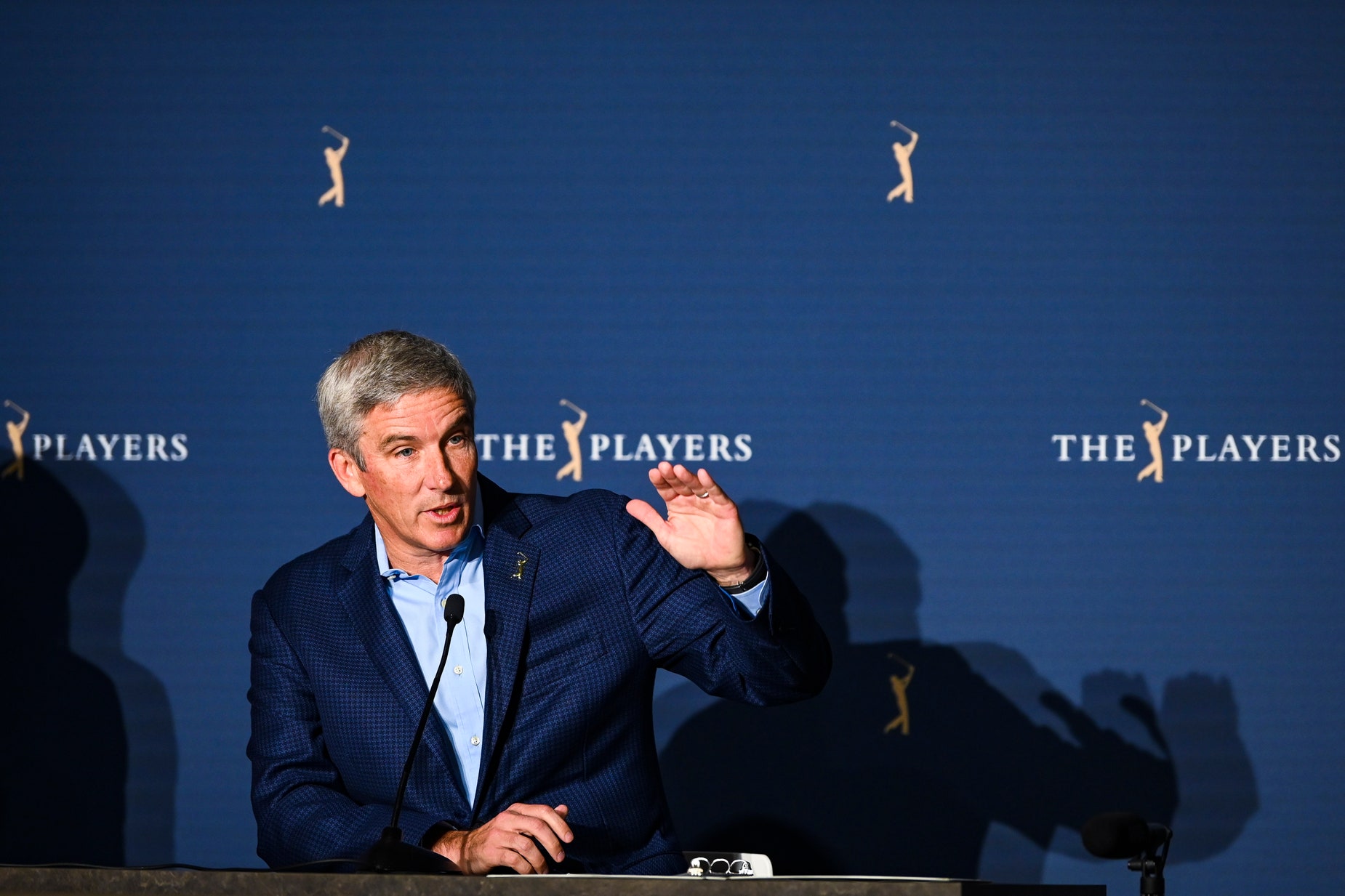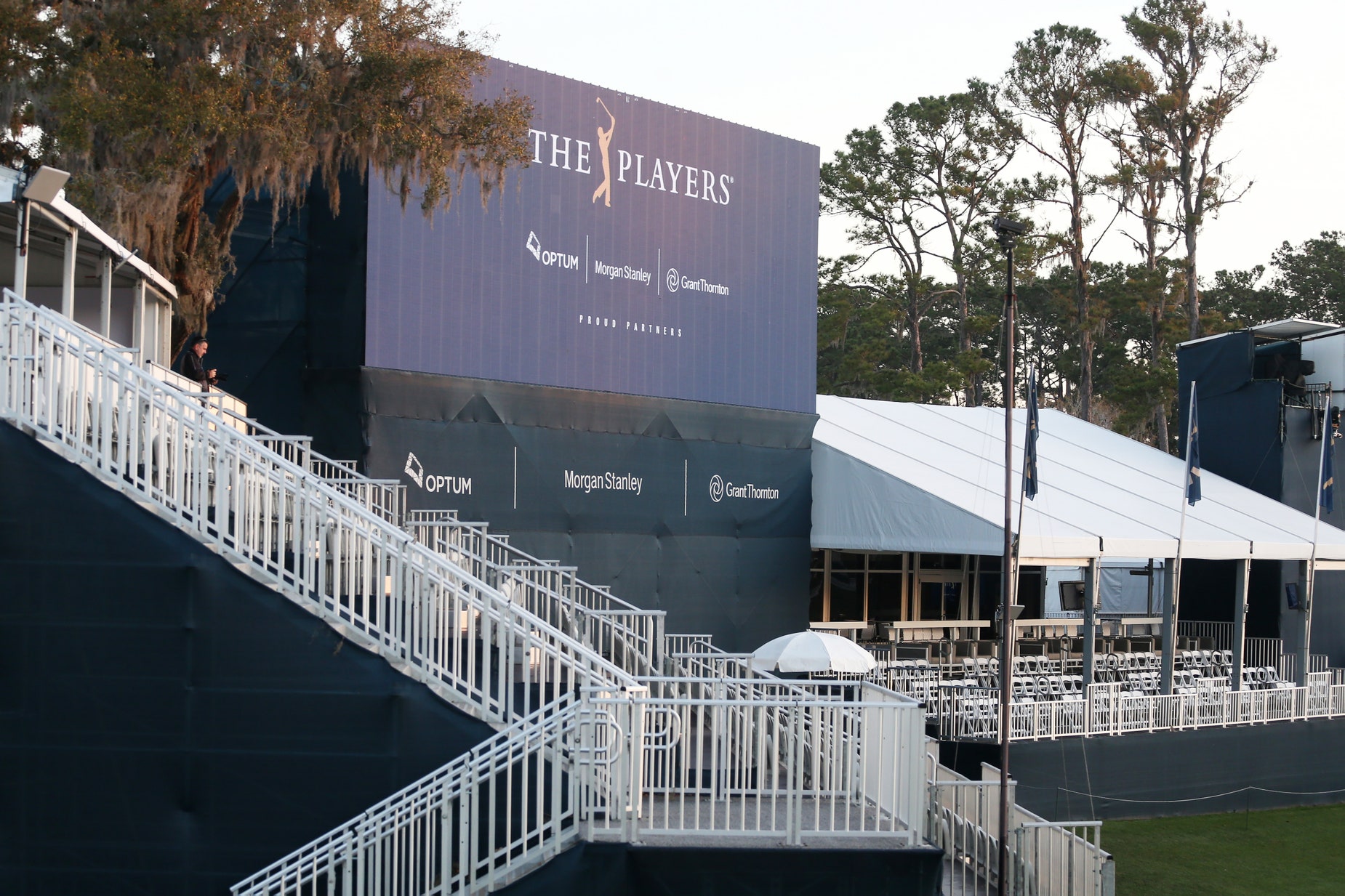Sam Greenwood/Getty Images
By Joel Beall
On the day the sports world stopped, golf walked on. Less than 10 hours after the NBA halted its season and 12 hours following the NCAA’s announcement to host its March Madness fan-free due to coronavirus concerns, players went off the first and 10th tees Thursday morning at TPC Sawgrass. The PGA Tour decided, a little before midnight on Wednesday, to conduct its Players Championship as scheduled, galleries intact. Reception to the decision was mixed from the field, sources tell Golf Digest, with a handful of players—Lucas Glover, Harold Varner III, Lee Westwood, Zac Blair, C.T. Pan—publicly airing their grievances on social media. Pan ultimately decided to withdraw, citing worries for himself and his family.
The decision to forge ahead looked markedly different as the day progressed, as the MLB, NHL, MLS, ATP and the NCAA suspended or canceled operations. PGA Tour Commissioner Jay Monahan announced at noon on Thursday that while the Players would continue, spectators would be barred from the property in Ponte Vedra Beach for the final three rounds as well as the next three Tour events; nevertheless, as the day was coming to a close, the PGA Tour stood along with NASCAR and the UFC as the only major sporting leagues to press on in the face of a pandemic.
Eventually, at roughly 10 p.m., making its fourth coronavirus statement in less than a day, the Tour announced its flagship event, and the three tournaments following it, would be cancelled.
“We tried to be as thoughtful and measured as possible during this dynamic and challenging time,” Monahan said on Friday. “We took all the steps within our control and felt comfortable proceeding.”
It’s fair to call the decision reactionary. This is golf, a game that is often guilty of being behind the times, and we’re not talking pace of play. However, while the past few days have felt like a year, they were just that: days. There is no blueprint for what this country, or the world, is facing. We expect much of leaders, and our society is not shy in sharing its disappointment when they fall short.
Still, they should be afforded latitude, and a reasonable amount of time, to try and navigate a course into the unknown.

Keyur Khamar
The criticism is easy, sure. According to the Centers for Disease Control and Prevention, part of mitigating the spread of the coronavirus is by limiting social interaction, which is why business entities and political bodies are stopping mass gatherings, a description that varies from 100 to 1,000 people. So the Tour’s decision to open the gates on Thursday, as other sports closed theirs, was questionable.
Yet sources tell Golf Digest, the Tour’s belief, which was supported by dialogue with federal and local agencies, was that the sport’s outdoor environment made it less conducive to transmitting the virus than indoor activities. It was a sentiment that Monahan relayed during Thursday’s press conference.
“We’re not in a stadium, and here this week at TPC Sawgrass our players are making their way over 400 acres,” Monahan said on Thursday. “And so we feel like we have, because of the nature of that and the fact that you’ve got 144 players here and over the course of a round our players generally do socially distance themselves, we felt like by taking this step to address the problem with our fans, we’re in a position where we can continue to operate the events as of right now.
“And you look at there are other circumstances that led to the decisions that those leagues made that are unique to those leagues that we’re not currently faced with. And that’s something that we thought about and talked about, but ultimately when you break it down and you think about what’s going to happen here over the course of the next three days and then going forward, we’re comfortable having our players continue to play at this time.”
It is a sound argument in theory, but it is a logic that scientists believe may be flawed when it comes to COVID-19. The virus is thought to spread mainly through person-to-person contact, and people within six feet of each other, according to the Centers for Disease Control and Prevention. It also can be transmitted through respiratory droplets produced when an infected person coughs or sneezes.
Basically, it doesn’t matter what the location is; if it’s a public space, a person is in danger. Be it 10,000 fans or 100 fellow competitors, that is a dense ecosystem. If you want to accuse the Tour of anything, it’s getting bad intel. (For what it’s worth, Monahan reiterated on Friday that the Tour felt it had “a safe environment and we’ve done all the right things, but we can’t proceed, and it’s not right to proceed.”)

Matt Sullivan
What’s important is the Tour came to the decision it needed to make. Given the transient nature of Tour life and the cauldron of backgrounds, locations and interactions of those involved in an event, it is highly fathomable that a player, caddie, official, volunteer or fan could if not would come in contact with the virus, either this weekend or in the future. That’s a lot of parties involved acting as potential carriers.
Moreover, the Tour had to take its membership into account. President Trump has banned travel to 26 European countries, countries where some Tour players live. A contingent of players could be stranded, or worse, separated from family by continuing to play, a factor Monahan cited on Friday.
“When we got to late [into Thursday] and players came off the golf course, and to some of the questions that we received here yesterday, particularly from international players who were trying to figure out, had a lot of uncertainty,” Monahan said. “Trying to figure out what they do with their family, how they get home, how they get their families here, and just uncertainty for a number of players generally.”
There’s also the consideration of resources—human, capital, natural—it takes to run a Tour event, even one without galleries. The latter two must be conserved for the highest priority, and a golf tournament isn’t that. As for the former, as Monahan continually reinforced, “the health and safety of everyone associated with this organisation is our number one priority.” Operating business as usual runs decisively counter to that prerogative.
The argument could be made that there was no choice. When the NCAA, a universally ridiculed group, signals it’s time to take a knee, it becomes damn near indefensible to play on, even with restrictions. And longtime Tour backers will admit it hasn’t been their finest 24 hours. Those seem like small qualms given what lies ahead.
Besides, whatever issues exist, the Tour did prove malleable towards the voices from fans, media, and players. They listened, they adjusted, they acted.
The PGA Tour made the right move. Even if it took awhile to get there.









